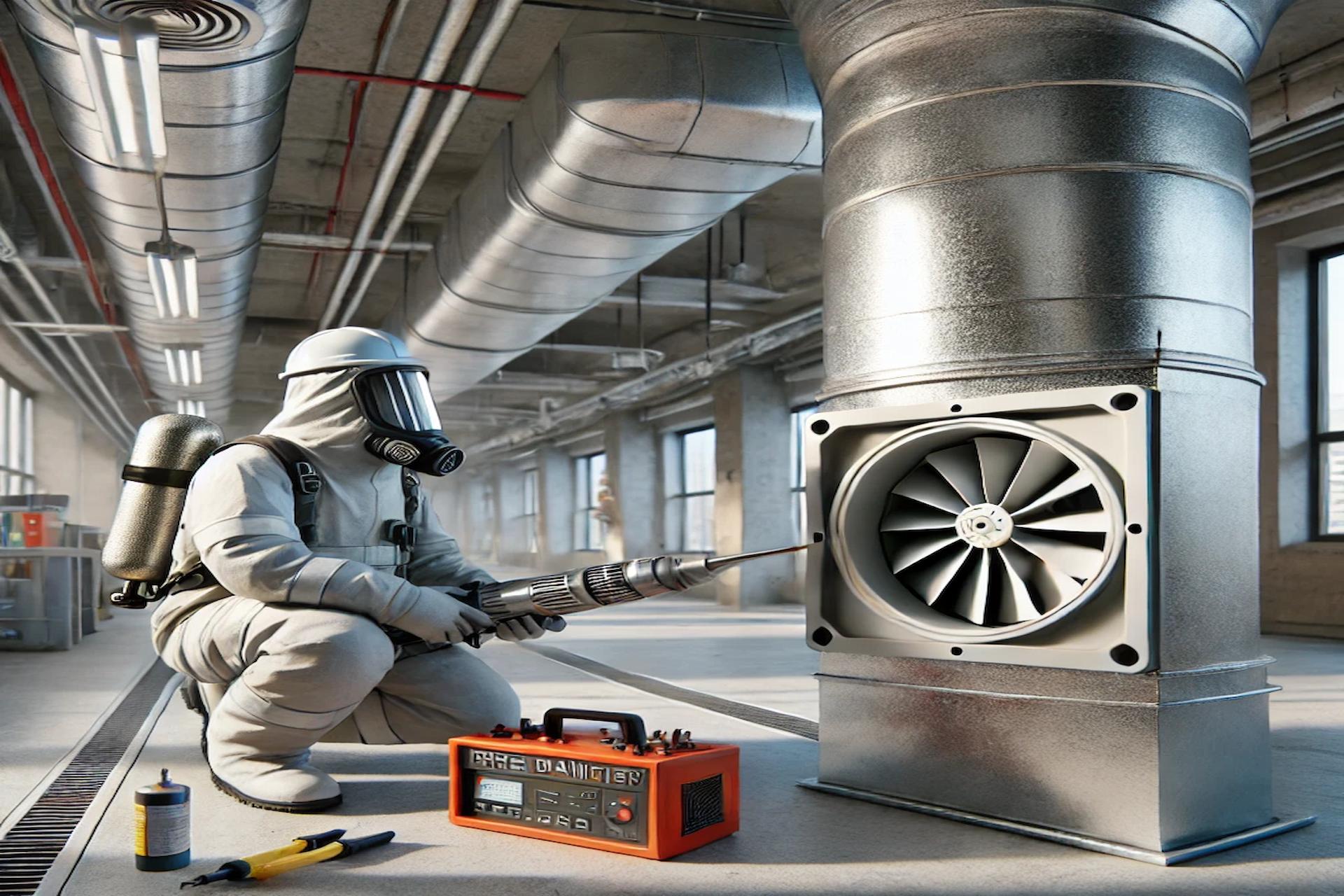Fire damper testing plays a crucial role in maintaining effective fire protection systems within buildings. These essential components of fire safety infrastructure help to prevent the spread of smoke and flames through ventilation systems during a fire emergency. Regular testing of fire dampers has an impact on whether they function correctly when needed most, ensuring compliance, minimising property damage and saving lives.
Here we will delve more into the importance of fire damper testing covering what building owners and managers need to know to comply with safety regulations, the legal requirements for testing, what the process involves and the potential consequences of neglecting this vital aspect of building maintenance.
- What are Fire Dampers, and Why Are They Important?
Fire dampers are mechanical devices strategically placed in HVAC systems, ductwork, walls, floors, and ceilings where they act as the first line of defence in fire protection. Fire dampers are typically made of galvanised steel or other fire-resistant materials, designed to withstand high temperatures and maintain their structure during emergencies.
These devices in their ordinary state remain open to permit airflow throughout the property, but during a fire incident, they are designed to close immediately when triggered. By doing so, airflow is restricted which helps to impede the passage of flames, smoke, and hot gasses, containing them to a single area and preventing their spread to other parts of the building.
This containment has an impact on safeguarding lives, reducing property damage, and assisting firefighting efforts. By restricting smoke movement, fire dampers improve visibility for occupants during evacuation and for firefighters throughout their rescue operations. They are an integral part of a building’s passive fire protection strategy, working alongside other safety features to enhance overall fire safety.
- Legal Requirements for Fire Damper Testing
Fire damper testing has a significant impact on building safety and compliance, and strict laws must be adhered to. Here are some key aspects of the legal requirements around fire damper testing;
- The Regulatory Reform (Fire Safety) Order 2005 places the responsibility on employers to maintain fire safety systems.
- BS 9999:2017 requires annual testing of all fire dampers by a competent person.
- In areas with high dust or pollutants, more frequent testing is necessary.
- The Building Regulations Part B (Fire Safety) outlines specific requirements for fire damper installation and maintenance.
- Compliance involves regular inspections, functional testing, and proper documentation.
- It’s crucial to use fire dampers that meet British or European standards, such as BS EN 1366-2:2015.
- Building owners should stay informed about the latest regulations to ensure ongoing compliance and safety.
- The Fire Damper Testing Process
The fire damper testing process involves several crucial steps to ensure proper functioning.
- It begins with a thorough visual inspection, where technicians examine the damper’s internal components for signs of corrosion, dirt, or dust.
- The dampers are cleaned and lubricated according to manufacturer instructions.
- A drop test follows, which involves manually releasing the fusible link to verify the damper closes fully and creates a proper seal.
- For electro-mechanical dampers, technicians inspect the latching mechanism, operating cable, and remote controller.
- The cleanliness of guide channels and springs is checked.
- Proper documentation, including photographic evidence and detailed reporting, is essential throughout the process.
- Annual testing is typically required, with more frequent inspections necessary in dust-laden environments or high-risk settings like hospitals.
- Consequences of Neglecting Fire Damper Testing
Fire damper testing is not something that should ever be forgotten, delayed or overlooked and neglecting to carry out fire damper testing can have serious implications for building safety and legal compliance.
Failure to maintain these crucial components can lead to them malfunctioning during a fire, potentially allowing smoke and flames to spread rapidly through HVAC systems. This oversight puts lives at risk and increases the likelihood of extensive property damage as well as potential harm or injury to the people inside.
Regular testing is not just a best practice; it’s a legal requirement. Proper testing and maintenance documentation is essential to demonstrate compliance and avoid potential liability issues.
Ultimately, the cost of neglecting fire damper testing far outweighs the investment in regular maintenance and safety measures. Building owners and managers who neglect testing can face severe legal consequences, including fines, lawsuits, reputational damage or even a prison sentence.





